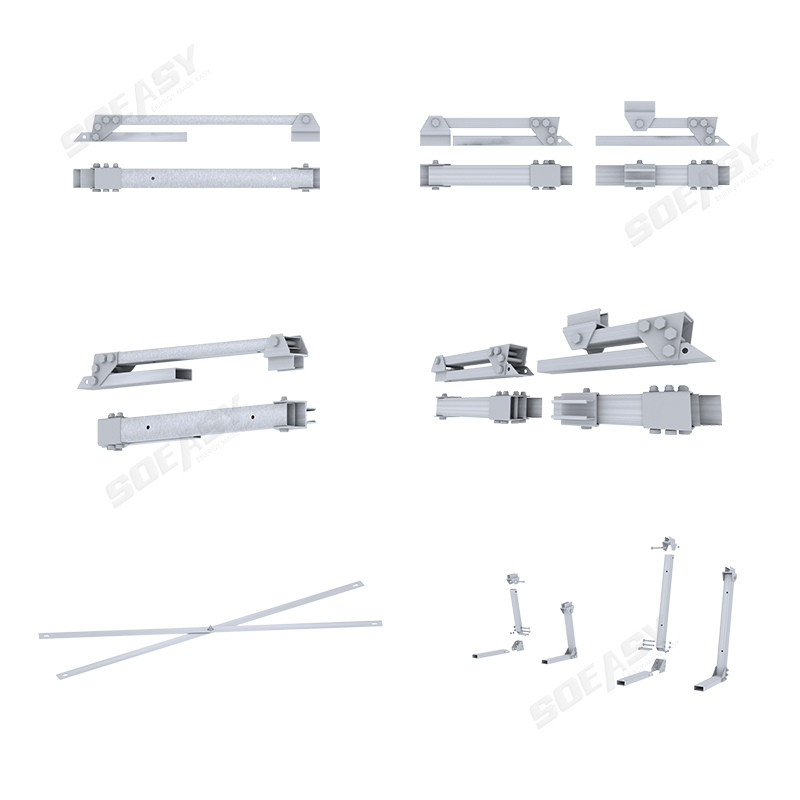Product description
The ballast bracket is supported by four single columns on one side and fixed with angled aluminum in the middle to ensure the stabilization, and can realize the overall adjustment of front, rear, left, and right, effectively reducing the requirements for installation accuracy. Compared with the traditional ballast bracket, the material consumption is greatly reduced, thereby saving the material cost.
Technical Parameters
| Material |
Aluminum 6005-T5 SUS304 |
| Wind Load |
45m/s |
| Snow Load |
1.5KN/m² |
| Module Angle |
10-45° |
| Installation Site |
Flat Roof / Ground |
| Color |
Natural |
| Warranty |
10 Years |
| Our service |
OEM; Professional customization; Free design |
High Quality Components

SOEASY solar ballast mounting's whole structure is composed of lightweight and high-strength aluminum alloy, which has strong corrosion resistance, is green and environmentally friendly, and can be reused. The structure fully takes into account factors such as load-bearing, wind resistance, and earthquake resistance, undergoes rigorous calculations and tests to ensure safety and reliability.
FAQ
1、What is a ballast in solar?
Ballast is a common alternative used on solar installations unable to penetrate either the roof or the ground. Concrete blocks are placed throughout a project to secure an array to the ground or the roof and prevent wind lift or other movement, all without having to make any (or as many) penetrations.
2、Can you mount solar panels directly on roof?
Types of Mounting Systems. There are several mounting systems that contractors can use to install solar panels onto a roof. ... Direct mounted is the most common solution for residential roofs.
3、Does a roof need to be reinforced for solar panels?
A majority of solar panels have a lifespan of around 25 years, and thus your roof must have the capacity to withstand that weight for those years. If the roof is almost at the end of its life, then you may first need to do roof reinforcement, replacement or repair before installation of the PV system.
 X
X